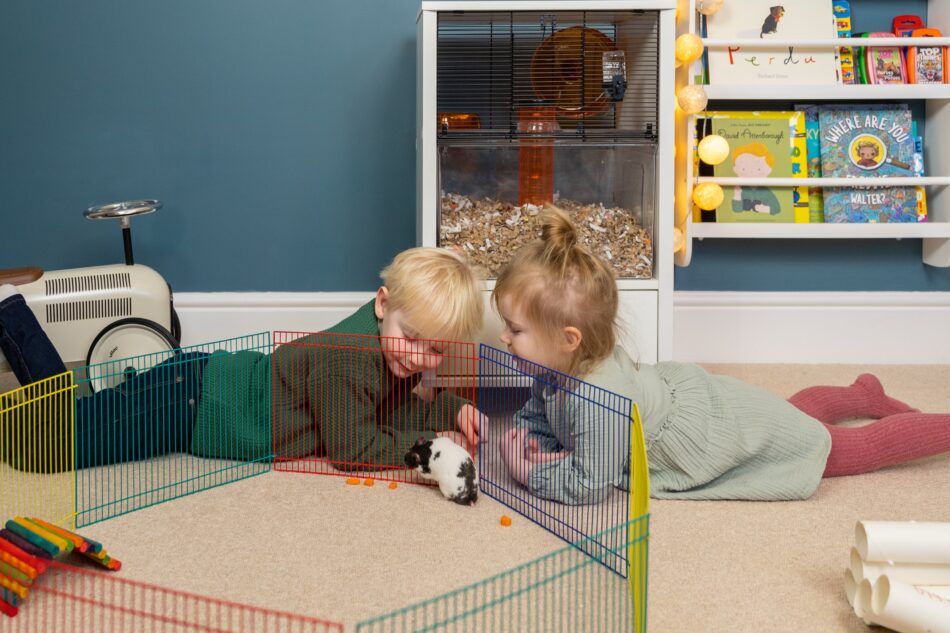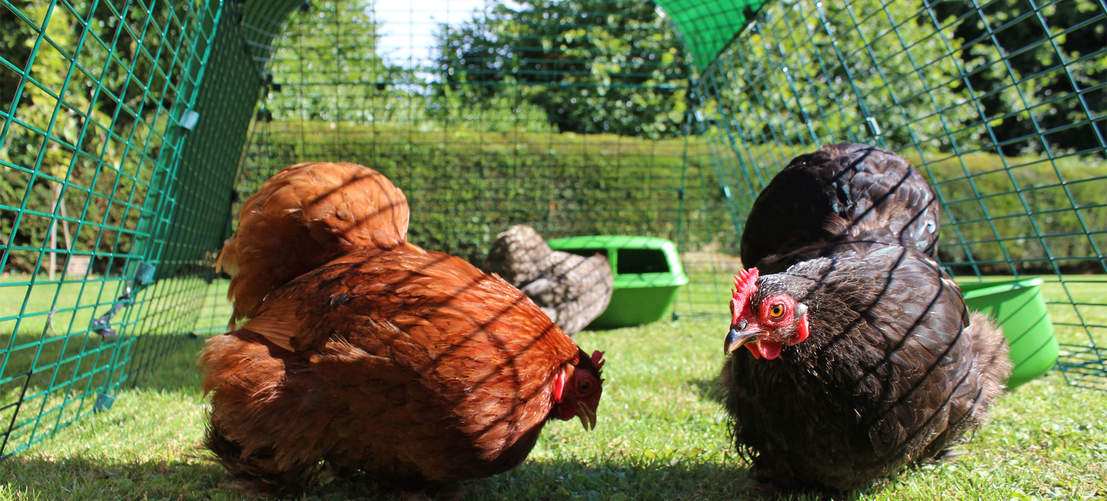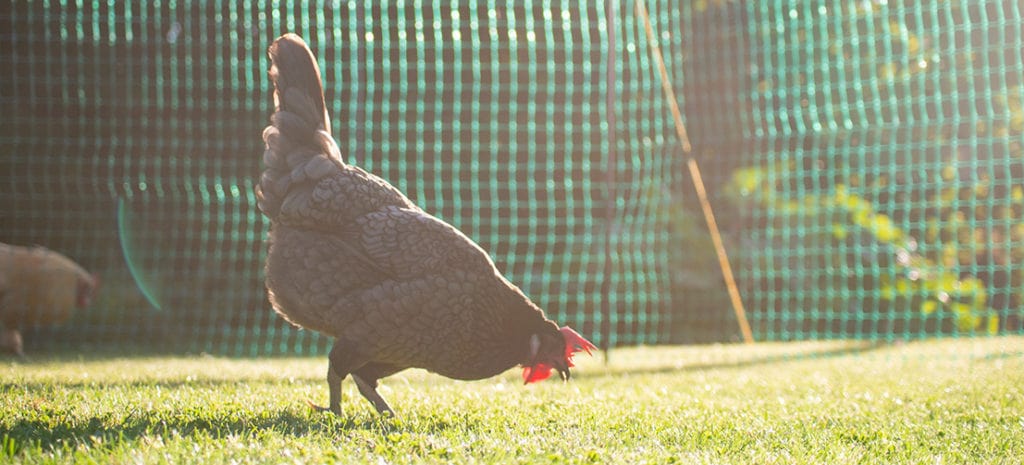In this post we’re introducing Esme, the latest addition to the Omlet HQ Pet family. This new puppy colleague has reminded us all of the crazy things we say to or about our dogs. Only truly mad dog parents will be guilty of saying these things…and also happily admit to it. If you think of someone while reading these, make sure you name and shame them on social media using #OmletPets.
“Can I work from home today?”
“Why?”
“My dog gets lonely…”

“Oh, don’t worry the dog will clean it up…”


“Go do wee-wees, go on”

“Sorry I’m late, my dog was -”

“Oh my God, my dog did the cutest thing this morning…”

“Sorry, she’s a licker”

“LOOK AT YOUR LITTLE FACE!”

“OH I MISSED YOU TOO!”

“Who’sacutiewootiethenyesyou’reacutiewootieyesyouare”

“Hey, you free tonight?”
“No, I’m cuddling my dog.”

This entry was posted in Dogs on February 19th, 2019 by chloewelch
For Valentine’s Day we wanted to find out how much love you have for your four legged friends vs the affection you have for your partner? We surveyed over 400 dog owners. The results are in and they make an interesting, yet not surprising read!
Among the key findings includes:
78% expressed that their dog is more attentive than their partner!
75% said their dog brings out their best side more than their partner does!
Check out the infographic below to see all the results!
This entry was posted in Dogs on February 14th, 2019 by chloewelch

Someone once said that you can train anything that has a brain that connects to a stomach, and that goes for hamsters as well. They are actually very clever little creatures and probably capable of more than you think – like learning tricks for example!
Why Should I Train My Hamster?
Training your hamster is a wonderful way to vary your daily playtime and spend time together, and it’s something that both stimulates your pet mentally and creates a strong bond between the two of you. It should be said though that this training takes a lot of time and patience, and every hamster is different, so there’s never a guarantee that your hamster will learn these specific tricks, or any tricks at all.
Can I Train a Hamster of Any Age?
As with most pets there are advantages of getting a young hamster when it comes to training and getting the hamster used to you and your family, as they have not yet developed habits and routines that can be difficult to break. This is not to say you can’t teach an old hamster new tricks, but it will take much longer to train him or her.
Where to Begin
The most important thing is that your hamster feels comfortable around you, and that your smell and your voice has a positive association. Try to always stay calm around your hamster, and avoid raising your voice, as that can cause unnecessary stress. Spend a good few weeks together with your hamster before you move on to tricks, so you know that you can trust each other!
Now you need treats. Maybe you already know what your hamster’s favourite is, but if you don’t, we recommend sunflower seeds. They are however very fatty, so make sure that you limit the intake to training sessions or special occasions. You can also try with small pieces of chopped vegetables like carrots or broccoli.
What Tricks Can I Teach My Hamster?
- STAND
Start with an easy trick, a good first one is ”stand”. Hold the treat in front of the hamster just over its head so that the hamster can see it but not reach it. As you do this, use your command ”stand”. Your hamster will instinctively stand up to get closer to the treat. When the hamster stands, give the treat and verbal praise. Only give the treat if the hamster stands, as they otherwise won’t understand why they are being rewarded. If your hamster doesn’t stand it might be because he or she is not hungry at that moment, or distracted by something else going on in the room. Try again a bit later. Repeat this a few times a day for a week or two, until your hamster stands even when you don’t have a treat in your hand. Stick to one command at the time, and still always reward the hamster for standing.
- JUMP
Now you can move on to another trick. Use the ”stand” command, and then move the treat up and forward and say ”jump”. If the hamster tries to jump, praise him or her and give the treat. If your hamster is happy to jump you can add a hoop into the mix. Hold some sort of hoop between the hamster and a treat, so that they have to move through the hoop to get to it. As they go though, say ”hoop” or ”jump through the hoop”. Start with the hoop touching the ground, and then gradually lift it if your hamster seems to enjoy the game.
- ROLL OVER
Another fun and easy trick is ”roll over”. All you need to do is to carefully place the seed on your hamster’s back and ask him or her to roll over. If they do it, reward them with the seed. After a while the hamster will roll over even without you putting the seed on their back.

Be consistent with the training, and let it take time, but it doesn’t hurt to shake up the routine every now and then to keep things interesting. Some tricks are easier than others, and all hamsters are different, so be patient and do not push your pet or get frustrated if it’s taking longer than you expected.
If both you and your hamster enjoy the training, there is really no limit as to how much you can teach your pet. You can use toys or build obstacle courses; make up the tricks as you go along and show off to friends and family!
This entry was posted in Hamsters on February 12th, 2019 by linnearask

To celebrate Valentine’s Day and the season of love, we want to imagine how all your dogs’ dating profiles would look if they had the ability to swipe – and we’re giving away 3 Fido Dog Crates from our range of Fido Nooks and Fido Studios.
Show off your dog’s personality in the description section, tell us their age and location, and really WOW us with the best picture of your gorgeous pup that will make the whole world fall in love with them! Share your dog’s dating profile to Facebook, Twitter, or Instagram using #PawAmour for your chance to win a Fido Nook or Studio of your choice. There will be a winner for each of these categories –
- The Best Groomed
- The Most Romantic
- The Funniest Profile

Is your dog looking for love? Would you like to find them a fluffy friend? Start creating their profile now!
- To get started, visit the Paw Amour page here.
- Upload a photo of your dog into the form. We recommend square photos for this – and make sure they are good quality, so the world can see your pooch clearly.
- Tell us your dog’s name, age (in human years) and ruff location.
- Explain your dog’s personality in the description section. E.g. favourite foods, activities. Remember there will be a prize for the funniest profile, as well as the most romantic!
- Enter your details (a human email address please!)
- Complete your profile, and share to Facebook, Instagram or Twitter with #PawAmour in the caption.
Competition closes at midnight on the 17th of February. We will choose 3 profiles to win a Fido Nook or Studio.
Good luck!
Terms and Conditions
- All Omlet competitions and promotions are in no way sponsored, endorsed or administered by or associated with Facebook, Twitter or Instagram.
- This competition is open to the global Omlet community.
- This competition is not open to Omlet employees or members of their immediate families. Likewise, it is not open to the Employees of Omlet Partners who may be involved in promoting this competition.
- To be entered into this competition, you must enter your email address on the Paw Amour entry page, and share your dog’s profile to Facebook, Instagram or Twitter with #PawAmour in the caption.
- This competition will close at midnight on the 17th of February. Winners will be contacted within 7 days after closing date. If the winners do not respond to claim their prize within 7 days of notification, we reserve the right to withdraw the prize from the winner and pick a replacement winner.
- 3 winners will be chosen from all entrants worldwide. These winners will be chosen by the Omlet team, and our favourites will be picked according to these categories;
- 1 winner for Most Romantic
- 1 winner for Best Groomed
- 1 winner for Funniest Profile
- The prize is a Fido Nook or Fido Studio from Omlet. Winners can choose between Fido Nook or a Fido Studio, and whether they would like a 24” or 36” size, a crate and/or wardrobe. The winner will receive a Fido bed to fit. No other accessories will be included.
- Our decision in respect of all matters to do with the competition will be final and no correspondence will be entered into.
- The prize is non-transferable and has no cash value.
- By entering this competition, entrants are indicating their agreement to be bound by these terms and conditions.
- All entrants agree to the use of their user-generated content (e.g. photos submitted on entry) for future marketing purposes.
- The winners agree to the use of their name and any reasonable requests by Omlet relating to any post-winning publicity.
- Omlet reserve the right to withdraw competitions at any point. Omlet may amend any competition, competition information, or these terms and conditions without prior notice. Any changes will be posted either within the competition information or these terms and conditions.
This entry was posted in Competitions on February 7th, 2019 by chloewelch

On average backyard chickens live to an age of six to eight years, but there are of course exceptions. How old a chicken will become depends amongst other things on the breed and how a chicken is kept. Heavy layers exhaust themselves with a lifespan of just three years, others can live up to ten years. According to the Guinness World Records world’s oldest chicken is Matilda, a Red Pyle hen from Alabama that died at the age of sixteen (1990-2006). A hen is considered a senior around the age of five. If you are not sure about the age of a chicken, there are signs that will tell you your hen is getting older.
As a chicken gets older the texture of the comb will slightly change and she will likely have some scars from being pecked by other chickens. The feet and legs tend to thicken and if your hen has spurs, you know she’s not a youngster anymore (generally chickens grow spurs around three years of age). Arthritis may cause your older chicken to move stiffly and you might notice she walks a bit slower and more carefully. And of course the egg production of an older hen will decrease. The average chicken lays eggs for four to five years on a regular basis, with the peak of the egg production around 18-24 months. Already after two years, the egg production tends to drop. When you start seeing soft or thin-shelled and misshapen eggs, you know your hen is about to retire from egg laying altogether. But with most breeds living to age seven or beyond, you’ve got a few more years to enjoy the companionship of the hen that has served you and your family so well.
CARING FOR OLDER CHICKENS
Caring for older hens isn’t difficult and really isn’t much different than caring for them when they’re younger but there are a few things you can do for them to make sure they are healthy and comfortable.
Lower the perch in the run and/or coop
Senior chickens can start having mobility problems due to arthritis or joint inflammation. By lowering the height of the perch to one or two feet off the ground it’s easier for your old hen to hop onto it, protecting her joints. Building a ramp up into the coop might be necessary.
Predator proof run
Old chickens don’t move as fast as they used to. Providing them with a predator proof space is important to keep them safe. It’s best to supervise your chickens when they are free ranging. You may want to provide your older chickens with a separate coop and run to prevent younger, more aggressive hens from pecking them.
Accessible food and water
Make sure food and water containers are easily accessible. This means the food and water containers must be on an easily accessible height. It can also be a good idea to have two sources of food and water: one in their run area and if they are free ranging one outside. Older chickens may not be able to range as far for food and water.
Feeding older hens
If your entire flock is older and none of the hens are laying any longer, you can give the whole flock a chicken grower feed since they don’t need the additional calcium that a layer feed provides. If you are feeding different age groups together or add new chicks to the flock, the entire flock can be fed the chicken grower feed from the time the new chickens are eight weeks old up until the laying age of 16 to 18 weeks old. After that the new layers will need a laying feed. The layer feed won’t hurt the older hens, as the calcium is good for their bones.
Nail clipping
Older chickens may not be wearing down their nails with activity like foraging and scratching. If the claws are curling round then they will need trimming. Consider nail clipping as part of caring for old chickens if your chickens have long nails.
A good vet
Try to find a vet near you who specialises in poultry. Do this and register in advance of having problems. Arthritis, egg failure, joint inflammation, gout, ascites, tumors, adenocarcinoma and salpingitis are issues that can come up with chickens of any age, but more so in old chickens.
BENEFITS OF OLDER HENS
In their own way, older hens contribute well past their productive egg laying years. Older hens still produce manure, which is a great fertilizer for your garden. Older hens still like to eat bugs. You’ll notice a reduction in the number of ticks and snails in your garden when you keep a flock of chickens. Furthermore, older hens are more likely to go broody and be available to raise the chicks you purchase or hatch.
Above: Omlet’s new chicken fencing
This entry was posted in Chickens on February 5th, 2019 by linnearask

















